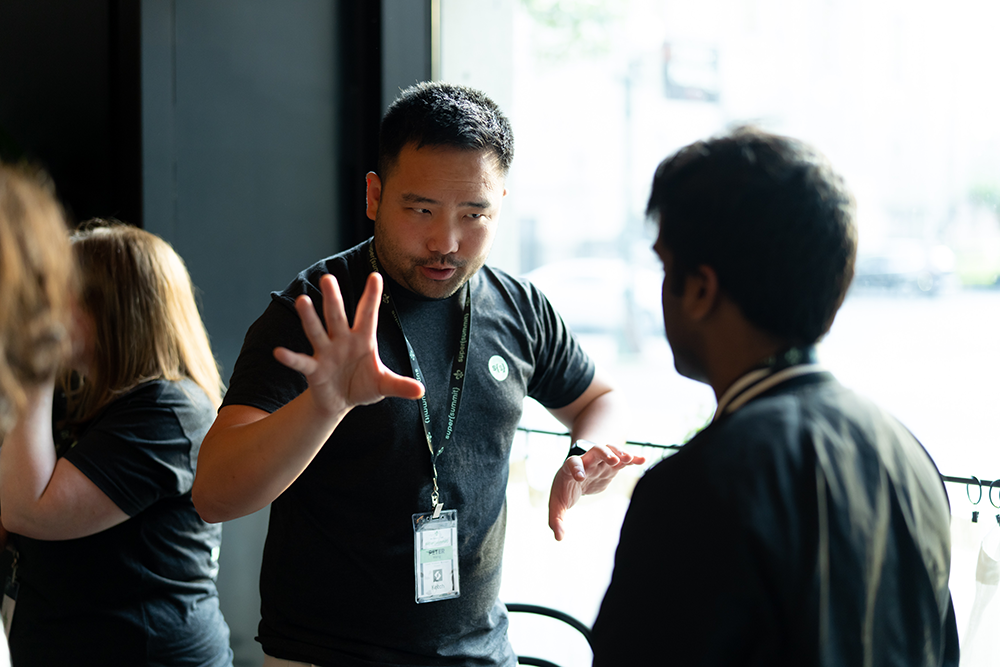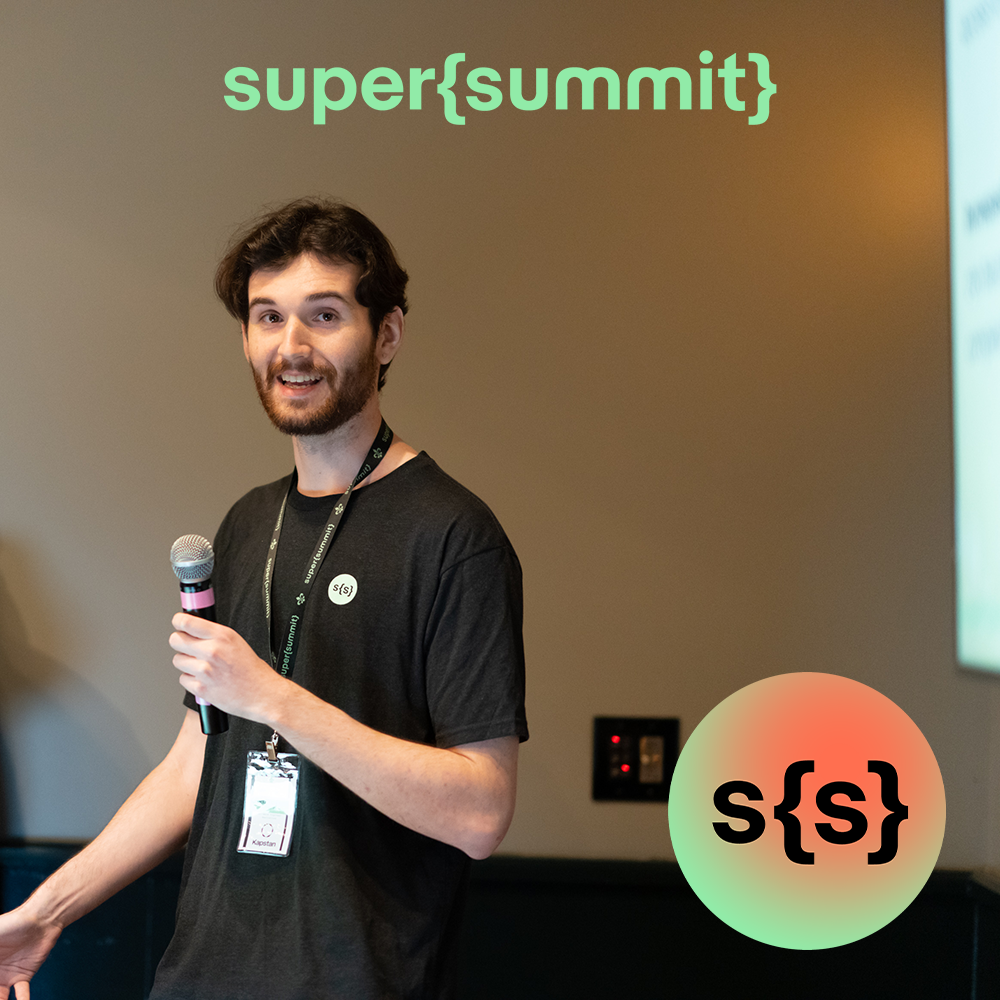
How Engineers Should Talk to Customers with Empathy
As an engineer, you’re usually heads-down building and improving the product. Customer conversations are handled by other teams like sales, customer success, and support.
When you are brought into these conversations, your instinct is probably to jump right into solutions mode. But it’s important to first understand the full context behind the customer’s ask. With empathy and patience, you can have more productive dialogues that build trust and meet the customer’s true needs.
But there’s immense value to engineering being active and present in customer conversations, and in the spirit of Vivek Vaidya’s concept of “horizontally scaling,” here are my top tips for how to establish better connections with customers as an engineer.
Who are you talking to?
Before any conversation, take a minute to understand who you're talking to. What kind of business are they and what's their size? An early-stage startup will have very different goals and constraints than a large, established enterprise. What are the founders’ backgrounds and respective roles? This context will shape how they see problems and where their priorities lie.
For example, if the person you are speaking to is an engineer and you're an engineer, you’re probably going to understand each other pretty well. But if you're an engineer talking to a lawyer, you might have bigger problems communicating. What they want out of the conversation might be different than what you intuitively think they want.
Understanding the basics about who you're talking to ensures you can empathize and find common ground during the conversation. It also helps you interpret what they say - you'll have a better sense of what they really need based on their role and point of view.
Why are they talking to you?
Next, be clear on why this customer is talking to you. If you’re being brought into the conversation by someone else at the company, be sure to ask them: What is the context? What problem are you trying to solve?
Often you might assume you're there to solve a technical problem since you're an engineer brought onto a call with a customer issue. Your instinct is to dive into code to fix it. But in many cases, the situation is more nuanced. As we'll discuss later, the conversation might be focused on selling or collaborative problem discovery.
The point is, it's really important to understand what the customer wants from you in that discussion. Don't make assumptions - get clarity from your colleagues on the goals and context before jumping into solution mode.

General types of customer conversations
Now that we have context on who we're talking to and why, what are some concrete examples of common types of customer conversations? And how should we approach them?
Problem discovery
On problem discovery calls, focus on uncovering the full context and use cases ("why") first before considering technical solutions ("how"). Often customers come in with specific technical solutions already in mind based on their limited knowledge but don't just accept their proposed ideas (“I just need you to add this API endpoint and we’re good!”) at face value. Getting the full context around why they want certain features or APIs allows you to ensure you’re solving the right problems, not just implementing narrow requests.
While customer centricity is important, also recognize when requests don’t make sense for the broader business. If their request isn't extensible to other customers, is reasonably time-consuming, and you've already done a bunch for them, show some tough love. Customers will respect when boundaries are set.

Selling
There are a couple of different kinds of “sell” conversations you might be roped into.
Early stage
An early-stage prospective buyer is mostly just doing research. For example, maybe they're looking for a data governance product and they're just trying to figure out who does X, Y, and Z. They know they need to purchase something to check off a few boxes, but they don't want to go too deep in any lanes yet. I had a lot of these sorts of conversations at a conference I went to in DC recently - potential customers would just ask, "Do you do this?" And in my mind, I'd think, "We're probably talking about two different things, but I think we're doing the thing you want us to do here. You can set up a call and we can have a real conversation." This first kind of conversation is mostly about checking boxes.
Late stage
A late-stage prospective buyer is someone who is seriously considering buying the product, has talked to a lot of peopl, and has done their homework. They’re much more likely to be trying to validate that your product actually does the things you claim it does.
These sorts of conversations are more about trust and confidence, and here, availability and showing interest in their problem are often more impactful than on-the-spot solutions or fast technical answers. They want to trust that you understand and can help - think of it as a “therapy session” where you're guiding them to feel comfortable choosing you.
Feedback
There are usually two types of feedback conversations:
Happy customer
The first is a happy customer who just wants some small enhancements. The product's working well for them overall, but it could be slightly better. For those types of conversations, you just want to show that you're committed to them for the long run. And it's really important to make sure they understand that they're being heard and that you're listening.
Unhappy customer
The second type of conversation can be much spicier. This is when the customer is really upset. Maybe an executive at their company bought this product but isn't actually going to use it themselves. Now the real end user is stuck with it and they're like, "Hey, this thing literally doesn't do what I need it to do." At this point, the most important thing is making sure the customer walks away with confidence - confidence that you're going to make it work for them, even if it's not working right now.
On these sorts of feedback calls, restating what angry customers say shows you're listening and breaks assumptions. Then capture key points in writing by taking notes live or reviewing call recordings afterward (AI transcription tools like Gong, Otter, and Fireflies make this super easy now), and create actionable follow-ups to provide relief. When you are creating these follow-ups, be sure to highlight the limitations of any path you agree to move forward on together. There are always pros and cons to every solution, but the customer may not fully understand the tradeoffs.
This post-call review is also an opportunity to loop in any other team members either from your side, like Sales, Support, or Legal, or their side, like subject matter experts or system integrators who can give you access to certain systems. The customer likely won’t know who you need access to, so you’ll need to ask for the right stakeholders proactively.
The review isn’t just for show: make sure that you actually follow up with real features and designs to show you’re taking action. The features they need might take a while to fully create, but you can provide some quick wins along the way, like a small enhancement or design mockup.
Ultimately, remember that customers who talk to you are the ones who care. As my colleague Hannah Barnstone said, "Angry customers often care the most. Their frustration means they’re invested in finding a solution." Your product not working as expected causes real problems, but if they are coming to you with the problem, even if they are upset, it proves they are invested in finding a solution. Maintain a collaborative, not combative, mindset - you are working together to find the ideal solution. With empathy for their situation, you can turn these negative situations into positive outcomes.

Big takeaways
A few key points to remember that apply across all customer conversations:
- Know your audience - why are you talking to them specifically? Context is critical.
- Focus on “why” over “how” to get to the heart of problems and needs.
- Write down key insights immediately and follow up on them. Taking action based on conversations builds trust.
Making the effort to understand who you’re talking to, why the conversation is happening, and what the customer wants to achieve sets you up for productive discussions. You’ll avoid misaligned expectations and solutions that miss the mark.
Most importantly, showing genuine interest in customers and their problems builds connection and loyalty. Following up with actions based on what you discuss demonstrates you’re committed for the long-term, not just talk. Keep these principles in mind and you’ll get the most out of every customer conversation.
Watch my entire presentation from super{summit} 2023 alongside Hannah Barnstone below, and learn more about super{summit} at superset.com/summit!
Tech, startups & the big picture
Subscribe for sharp takes on innovation, markets, and the forces shaping our future.
Let's keep in touch
We're heads down building & growing. Learn what's new and our latest updates.


